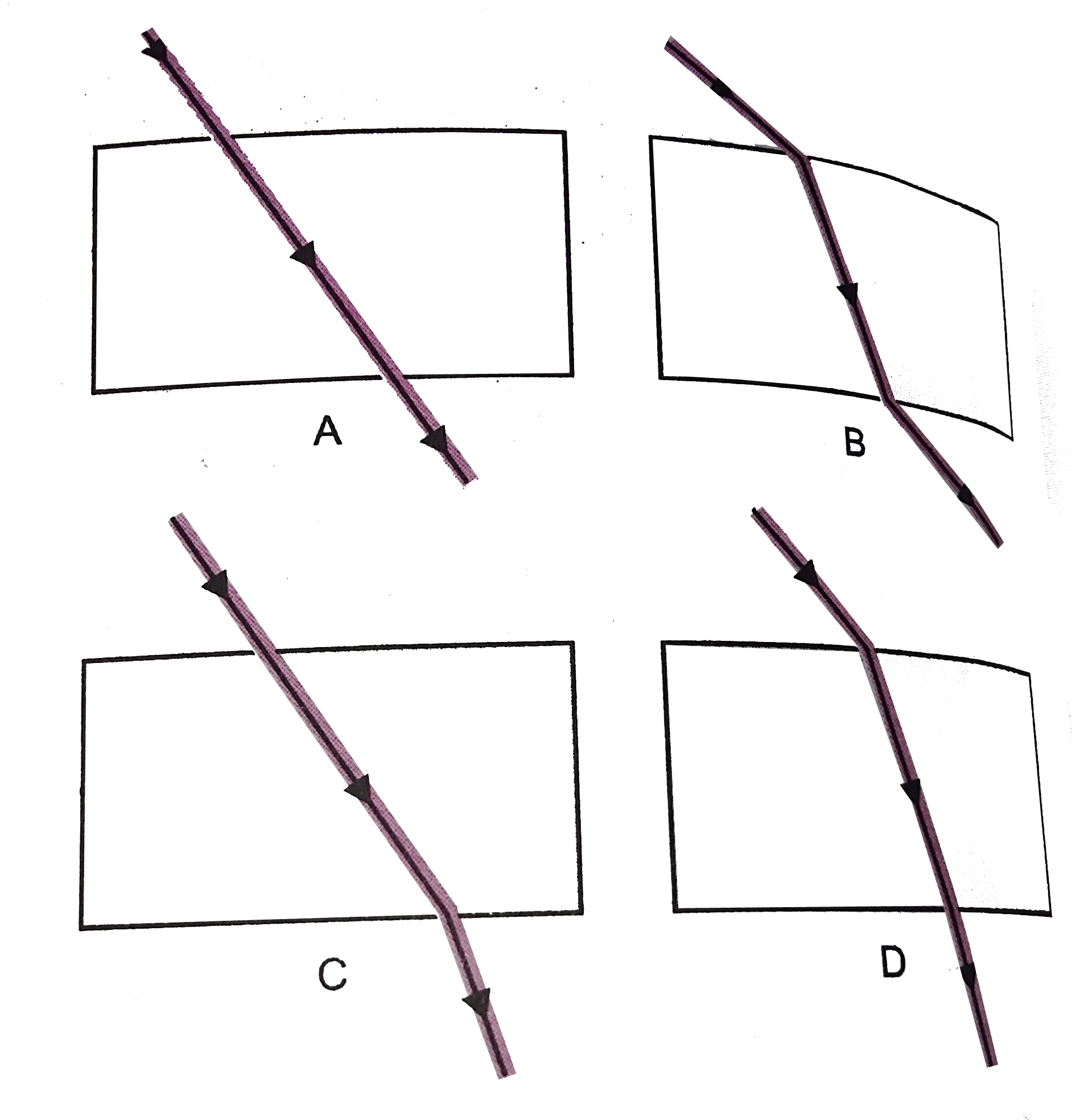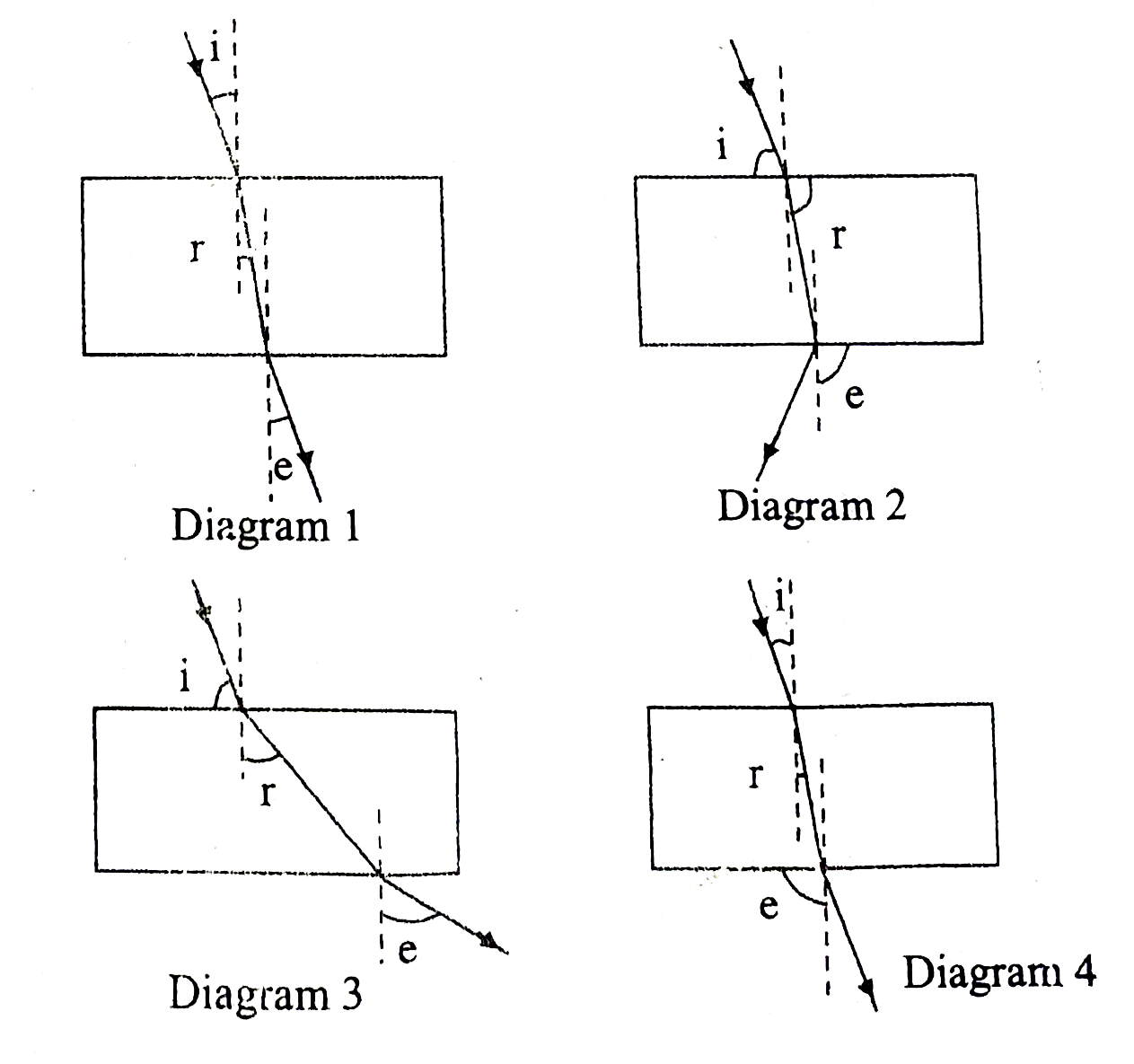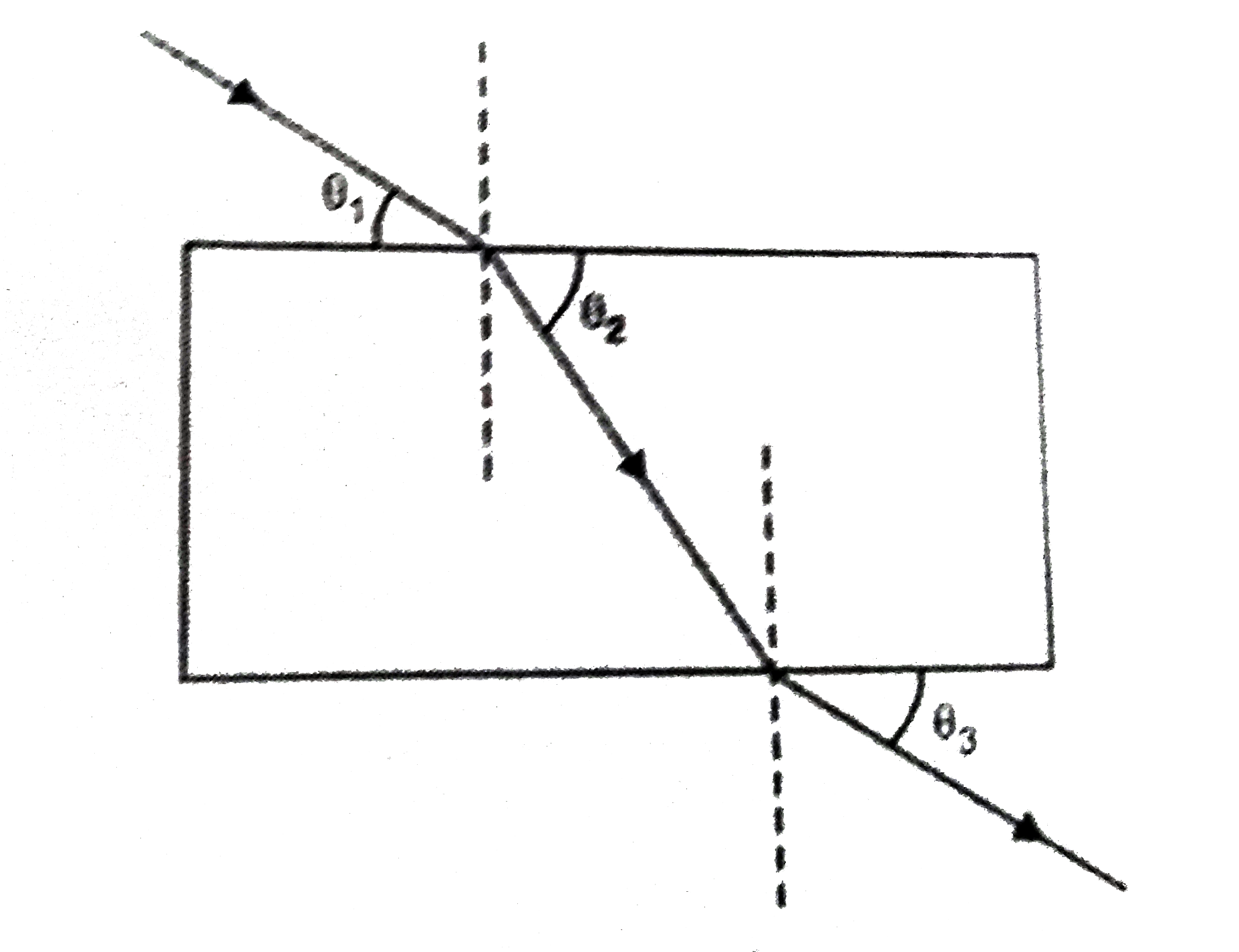The path of a ray light coming from air passing through a rectangular glass slab traced by four students are shown as A, B, C and D in Figure. Which one of them is correct ? 
A
B
C
D
The correct Answer is:B
In a rectangular glass slab, the emergent rays are parallel to the direction of the incident ray, because the lateral daviation of bending of the ray of light at the opposite parallel faces (air-glass) and (glass-air interface) of the rectangular glass slab are equal and opposite. This is why the ray emerges are parallel to the incident ray.
Topper's Solved these Questions
Similar Questions
In an experiment, the path of a ray of light passing through a rectangular glass slab was traced by a student. Which of the following diagram shows correct measurement of angle of incidence (i), refraction (r ), and emergence (e ) ?
 View Solution
View SolutionWhat is lateral displacement of a light ray passing through a glass slab ?
View Solution
Knowledge Check
- Question 1 - Select One
In an experiment to trace the path of a ray of light passing through a rectangular glass slab, four students measured the angles of incidence (i), angles of refraction (r) and angles of emergence (e) as shown in the diagrams :

The correct measurement is given in the diagram :AABBCCDD - Question 2 - Select One
In an experiment on tracing the path of a ray of light through a rectangular glass slab, four students A, B, C and D used the following values of the angle of incidence and the distance between the feet of the two pins (fixed on the incident rays) :
A30∘,45∘,60∘ and 1 cmB30∘,45∘,60∘ and 6 cmC20∘,50∘,80∘ and 10 cmD20∘,50∘,80∘ and 15 cm - Question 3 - Select One
A student while doing the experiment on tracing the path of a ray of light passing through a rectangular glass slab measured the three angles marked as θ1,θ2 and θ3 in the figure.
His measurements could be correct if he were to find :
 Aθ1<θ2<θ3Bθ1<θ2 but θ1=θ3Cθ1>θ2>θ3Dθ1>θ2 but θ2=θ3
Aθ1<θ2<θ3Bθ1<θ2 but θ1=θ3Cθ1>θ2>θ3Dθ1>θ2 but θ2=θ3
Amol performed an experiment on tracing the path of a ray of light passing through a rectangular glass slab. When ray of light enters from air to glass slab, he observed ∠I=45∘. The angle of refraction must be
View SolutionIn an experiment to trace the path of a ray of light passing through a rectangular glass slab, angle of incidence in air was given as 60∘ . Two students P and Q found angle of refraction as 42∘ and 65∘ respectively. Who is right and why?
View SolutionIn an experiment to trace the path of a ray of light passing through a rectangular glass slab, angle of incidence in air was given as 60∘ . Two students P and Q found angle of refraction as 42∘ and 65∘ respectively. Who is right and why?
View SolutionA ray of light travelling in air is incident on a rectangular glass slab. What will happen?
View SolutionA student does the experiment on tracing the path of a ray of light passing through a rectangular glass slab for different angles of incidence. He can get a correct measure of the angle of incidence and the angle of emergence by following the labelling indicated in figure :
 View Solution
View Solution

